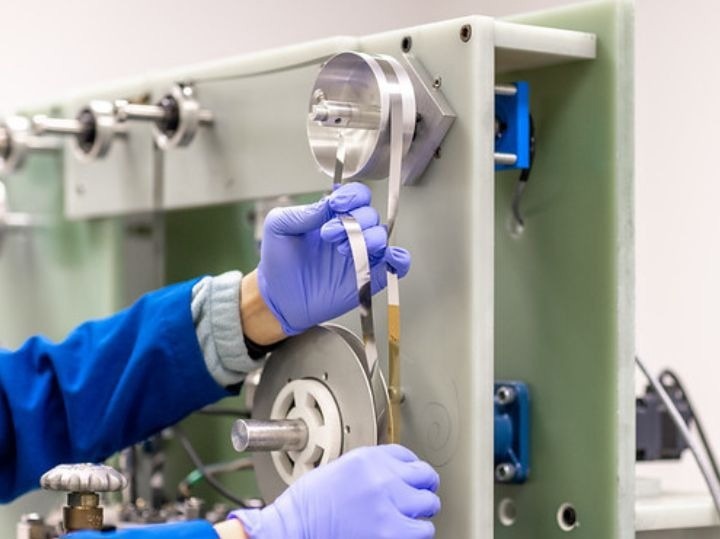The Selva Research Group of the University of Houston is one of seven teams that have furthered to the final stage of the United States Department of Energy’s Conductivity-enhanced materials for Affordable, Breakthrough Leapfrog Electric and Thermal Applications Conductor Manufacturing Prize, or CABLE Prize.
 High-performance superconductor tapes can maximize next-generation energy storage technologies and support electrification for energy-intensive sectors leading to a clean energy economy. Image Credit: University of Houston.
High-performance superconductor tapes can maximize next-generation energy storage technologies and support electrification for energy-intensive sectors leading to a clean energy economy. Image Credit: University of Houston.
The DOE competition, which consists of three stages, has committed up to $4.5 million to speed the development of inexpensive, manufacturable materials that conduct electricity more effectively and help propel America into a sustainable energy economy.
The “Super Cool Conductor,” an extremely thin wire developed by the University of Houston team, is a rare-earth, high-temperature superconductor that can be created for half the cost of copper cables, which are currently utilized for power transmission in most cities.
The Selva Group bagged the first stage of the CABLE competition in 2021 by convincingly exhibiting its breakthrough conductive material for electrical and thermal energy applications, the UH high-performance superconductor.
The teams were required to submit a sample of their material for review by CABLE prize-approved testing labs in the second stage. The UH conductor won the Beat Copper contest and has proven its ability to replace copper in motors, cables, and generators.
According to the DOE website, the superconductor’s unusual magnetic properties make it well-suited for small fusion power plants and other comparable applications.
Venkat Selvamanickam, Director of the Advanced Manufacturing Institute and Head of the Selva Research Group, is rightly proud of his team and their second triumph.
While there is a strong track record of the University of Houston in materials discoveries and innovations, our success in the CABLE competition showcases the capability of the Selva Research Group and the University in scaling up laboratory-scale advances to manufacturing. Our success demonstrates that a robust manufacturing research infrastructure in academia can be effective in transitioning innovations out of the lab to benefit society.
Venkat Selvamanickam, Director, Advanced Manufacturing Institute
Each Stage 2 winning group received $200,000 in cash and more vouchers. The seven winners progress to the competition’s third and final stage, where they must create a detailed business plan for their product and make a larger sample of their materials for additional testing. At the end of Stage 3, up to four teams will share a total prize pool of at least $2 million.
Selvamanickam and his team are prepared for the final round’s challenge.
The Selva Group’s high-performance superconductor tapes are already being utilized to build small-scale prototypes of magnets, coils, and cables by various partner entities. Within three years, the team plans to expand its technology to pilot-scale manufacturing of longer tapes required for full-scale devices.
The students and researchers in the Selva Research Group have been diligently advancing our high-performance superconductor technology, overcoming many technical hurdles in every stage. All of us are motivated to realize our ultimate goal of superconductors powering the clean energy future.
Venkat Selvamanickam, Director, Advanced Manufacturing Institute
Selvamanickam is known worldwide for his work in developing superior production technology for thin film superconductor wire. His group was the first to produce thin film superconductor wire, which was used to power 25,000 households in Albany, New York, in 2008, and is now used by more than 200 institutions worldwide for wind generators, power transmission cables, energy storage, magnetically levitated trains, medical imaging, and defense applications.
“We are proud of the work Dr. Selvamanickam and his team are doing to overcome obstacles and make this innovative and affordable wire technology available for broadscale commercial use,” says Ramanan Krishnamoorti, Vice President of Energy and Innovation at UH.